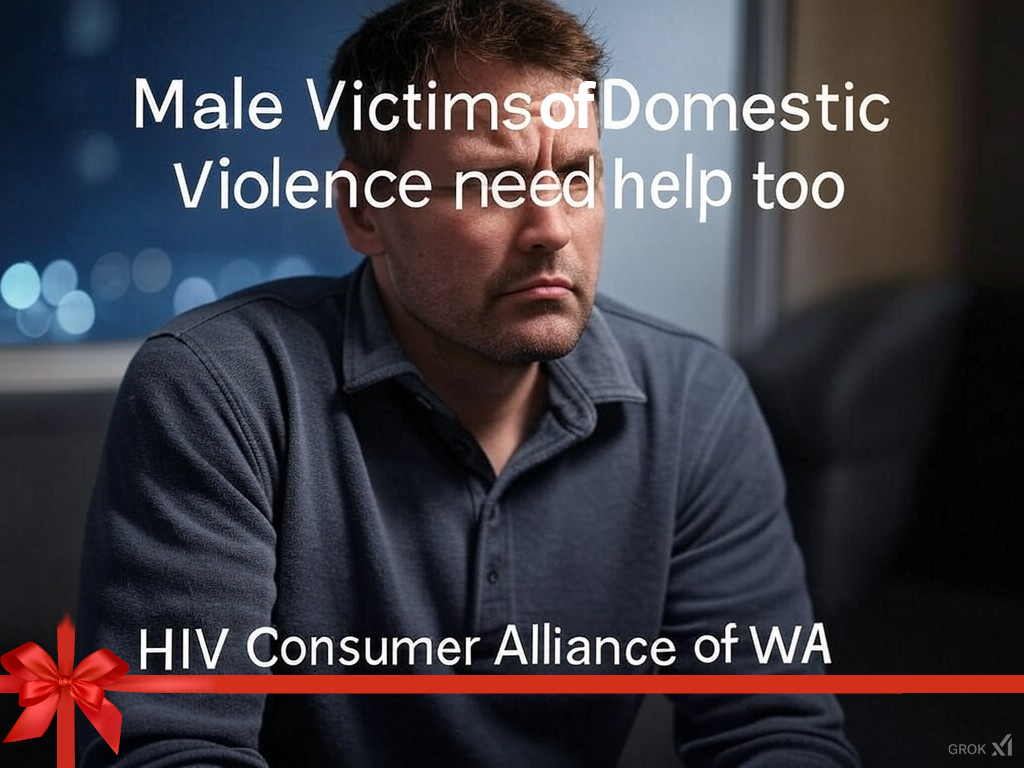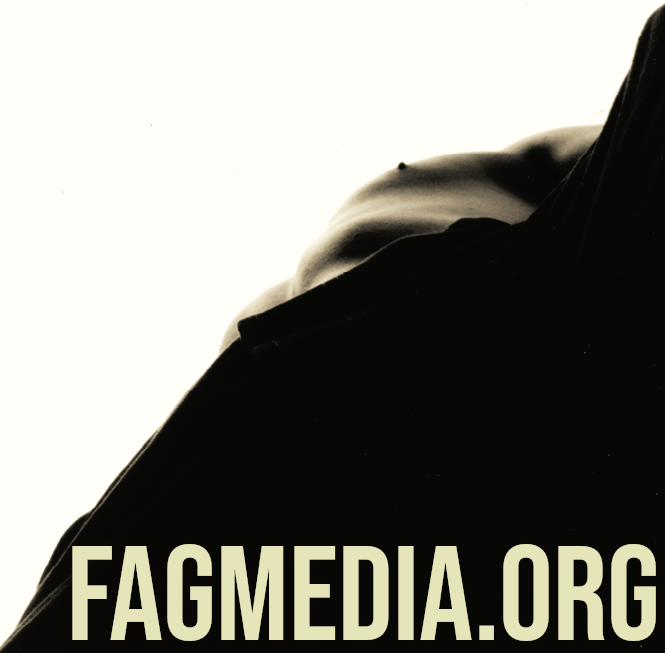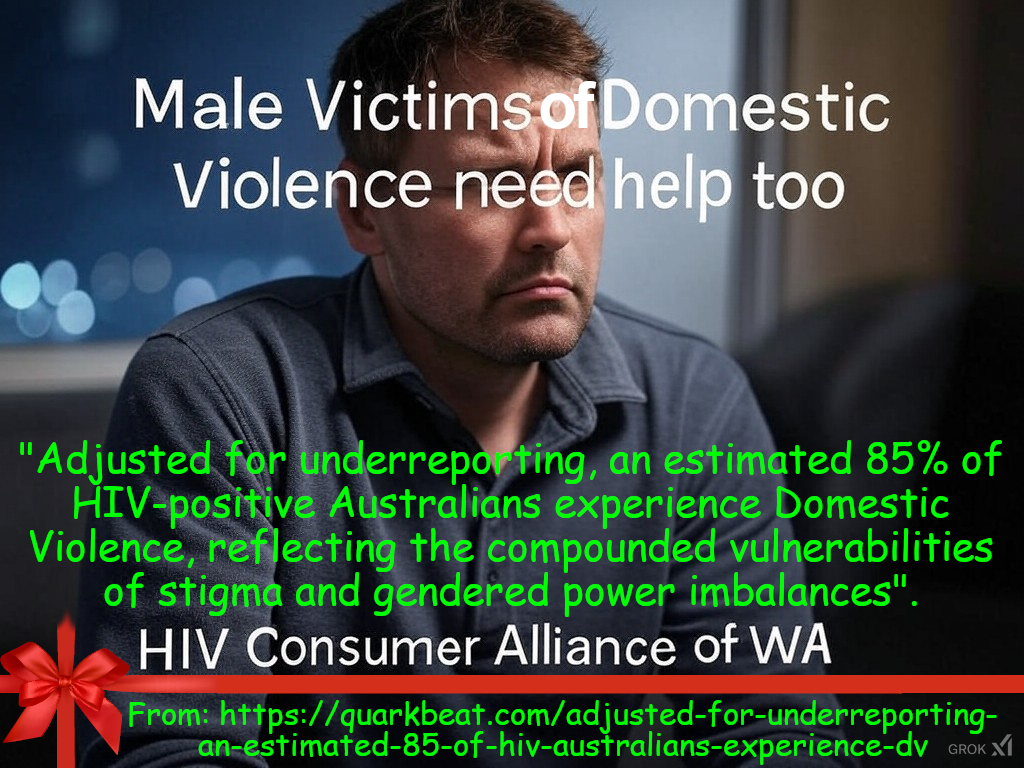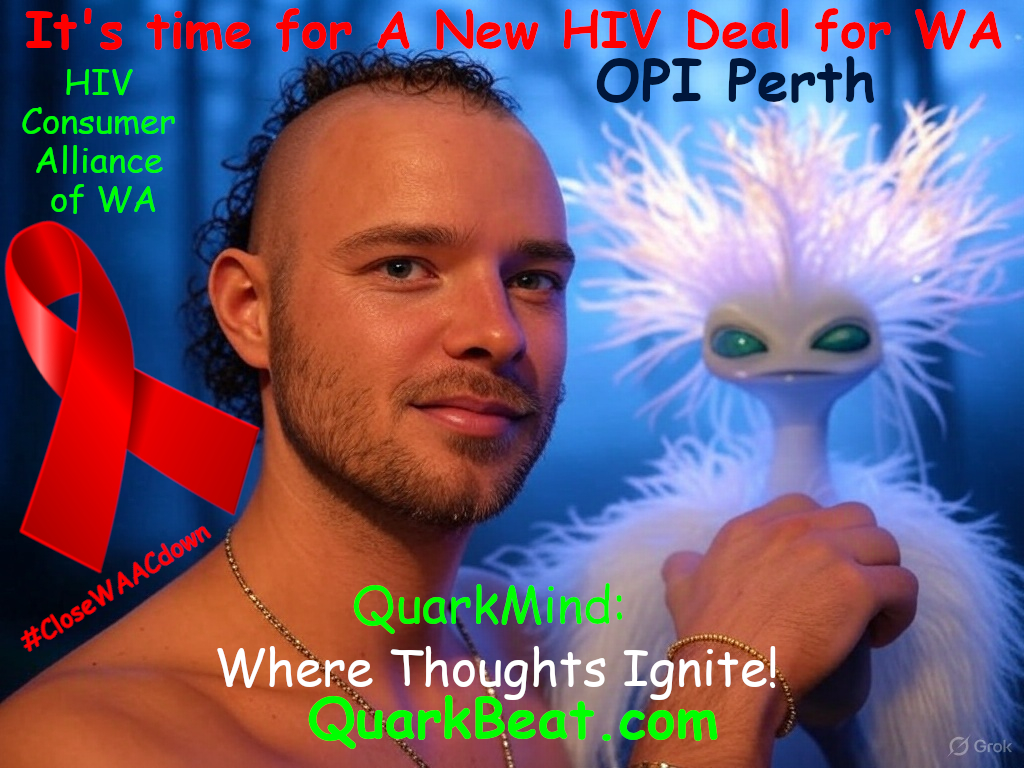HIV and Domestic Violence: The Hidden Crisis
Watch: 85% of HIV+ People have experienced Domestic Violence!
Domestic violence (DV) disproportionately affects people living with HIV, driven by stigma, social isolation, and the trauma of transmission often linked to sexual assault, rape, or deception. Globally, HIV-positive individuals face heightened DV risk due to fear of status disclosure and societal judgment, which traps them in abusive relationships.
In Australia, where 28,000 people live with HIV (10% women, 90% men, predominantly gay/bisexual men), the prevalence is alarmingly high. Adjusted for underreporting, an estimated 85% of HIV-positive Australians experience Domestic Violence, reflecting the compounded vulnerabilities of stigma and gendered power imbalances.
For HIV-positive women, studies indicate 70–90% experience intimate partner violence (IPV), often post-diagnosis, due to stigma and economic dependence. HIV-positive men, particularly gay/bisexual men, face similar rates (80–85%), with underreporting masking the crisis—only 2.8% of male victims report to police, suggesting true prevalence nears 85%.
In Australia, the lack of DV data and empathy for victims from AIDS organisations exacerbates this hidden epidemic, as stigma discourages reporting with services managed by feminist models of care that are overtly unwelcoming of male victims.
The trauma that is often associated with HIV infection and diagnosis, frequently involving non-disclosure, coercion, meth based sexual assault and discrimination, which further elevates the Domestic Violence risk for People living with HIV/AIDS.
This crisis demands urgent action. Health agencies must end the cover-up, fund support services for men and address stigma to help HIV-positive individuals effected by Domestic Violence, Sexual Assault and compromised health from living with HIV/AIDS.
By reforming politicised ideologically driven health care services, ending the coverups and acknowledging the near-universal Domestic Violence risk for People living with HIV/AIDS, Australia can drive policy change while delivering justice for the victims of neglect and serious crimes.

Male Victims of Domestic Violence Need Help Too!
References
- Joint United Nations Programme on HIV/AIDS (UNAIDS). (2023). Global HIV & AIDS statistics — 2023 fact sheet.
- World Health Organization. (2013). Global and regional estimates of violence against women.
- Maman, S., et al. (2000). The intersections of HIV and violence: Directions for future research. American Journal of Public Health.
- Power, J., et al. (2019). HIV Futures 9: Quality of life among people living with HIV in Australia. Australian Research Centre in Sex, Health and Society, La Trobe University.
- Kirby Institute. (2023). HIV, viral hepatitis and sexually transmissible infections in Australia: Annual surveillance report 2023.
Further Reading
- Mwanri, L., et al. (2021). “It is not an acceptable disease”: A qualitative study of HIV-related stigma and discrimination and impacts on health and wellbeing for people from ethnically diverse backgrounds in Australia. BMC Public Health.
- Smit, P. J., et al. (2012). HIV-related stigma within communities of gay men: A literature review. AIDS Care.
- Webel, A. R., et al. (2015). HIV infection and social capital in the United States: A mixed-methods approach. AIDS and Behavior.
- Taylor, J. C., et al. (2022). Barriers to men’s help seeking for intimate partner violence. Journal of Interpersonal Violence.
- Ransome, Y. et al. (2018). Social capital and HIV/AIDS in the United States: Knowledge, gaps, and future directions.
- Cuca, Y. et al. (2018). HIV stigma and social capital in women living with HIV.












